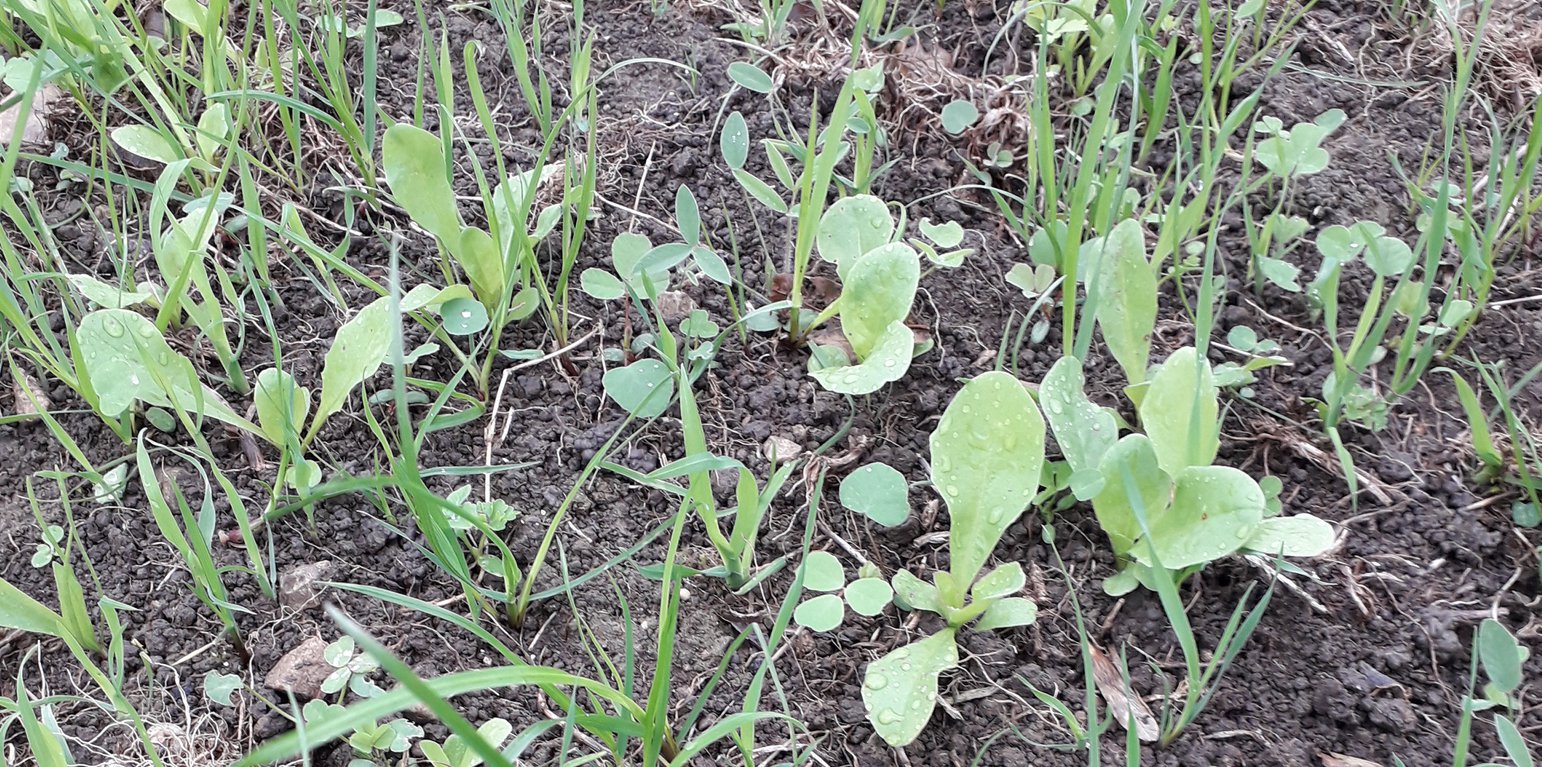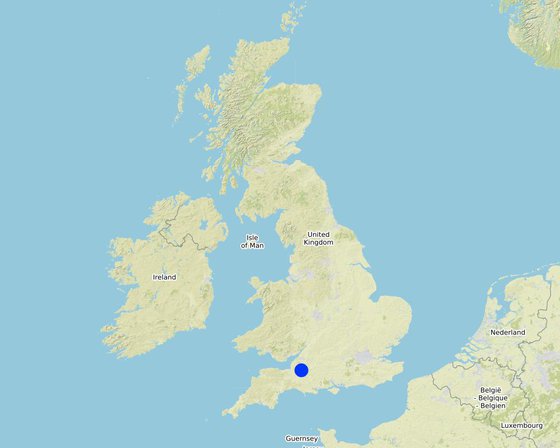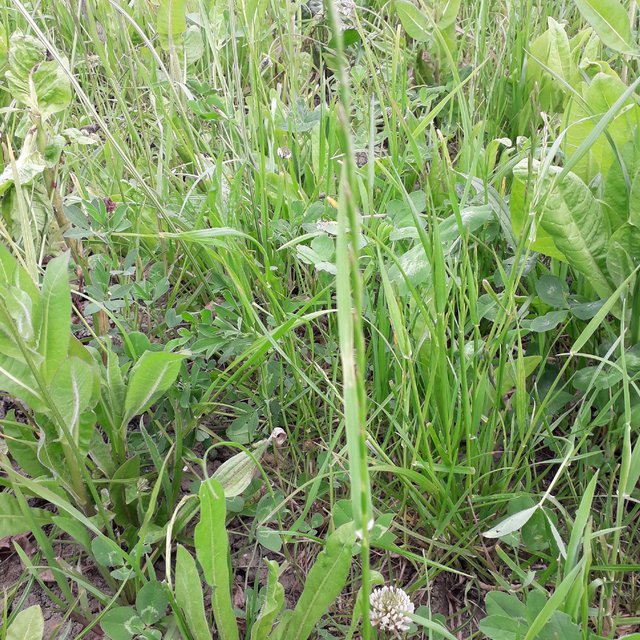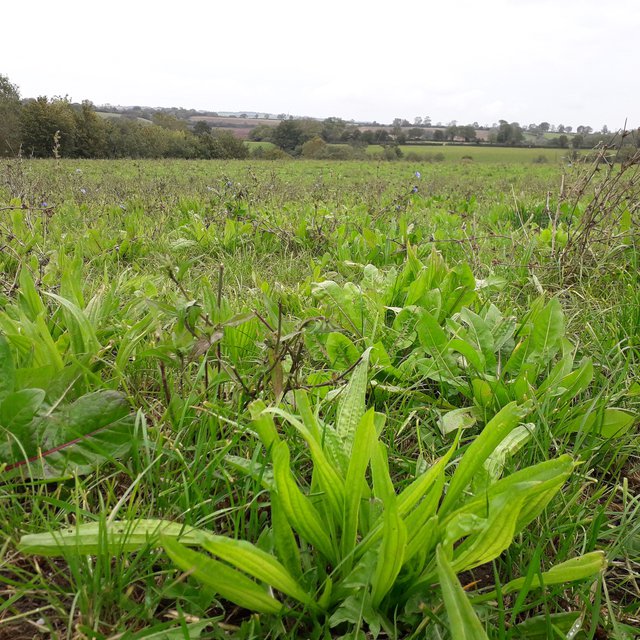



Perridge and Old Burford Farm is a 182 ha organic dairy and beef farm in Somerset. They established 43 ha of diverse herbal leys on their grazing platform between 2018 and spring 2021. There are a further 16 ha to be sown in autumn 2021 with further developments planned thereafter.
The system initially established a mix of chicory, plantain, ryegrass and clover in Autumn 2018, with further fields including a more complex mix of cocksfoot, Festulolium sp (a natural hybrid of ryegrass and fescue) , ryegrass, timothy, tall and meadow fescue, sainfoin; red, white, alsike and sweet clovers, sainfoin, lucerne, birdsfoot trefoil, burnet, chicory, ribgrass forage herb, yarrow and sheep’s parsley.
The most successful establishment has been from autumn sowing, following ryegrass, into a well prepared seed bed with shallow cultivation. This has led to three to four times more effective germination. To prepare the seed bed, a Cambridge roller was used to form a firm seed-bed and stop seeds going too deep, then seed was sown using a grass harrow and air seeder in August. Soil was rolled again with the Cambridge roller to break up clods of soil and then given a flat-roll to give tight soil-to-seed contact and to conserve moisture. The field is then left untouched until the following spring.
Once established by the following spring, the leys are grazed with 140 organic dairy cows, calves and beef animals. They are grazed using a strip rotation approach where they are moved daily at a target of 4,000kg dry matter (DM)/ha, and graze the herbage down to a residual of 1,800kg DM/ha (minimum residual of 10cm). The minimum full rotation is 35 days but this is often longer.
No artificial inputs are used with these diverse herbal leys, thus adhering to organic standards. The legumes (clover, lucerne, sainfoin and birdsfoot trefoil) are used to fix nitrogen, and with the grazing approach of “a third eaten, a third trampled and a third remaining as residual feed” soil organic matter is built up. In addition, the deep rooting species draw up minerals, improve soil structure and infiltration, and increase soil organic matter (SOM). Increasing SOM can also increase soil bacteria and microbe activity. Furthermore, managing the system with a rotational, cell grazing approach prevents selective grazing and increases species diversity and longevity of the sward.
Benefits:
Soil health – deep rooting species improve soil structure and infiltration, and through building up organic matter this improves soil carbon sequestration and leads to greater soil microbial activity and improved nutrient cycling. This is particularly important for this site due to mineral deficiency.
Resilient and persistent forage – deep rooting species bring up moisture from deep in the soil.
Mineral-rich forage – there is a high mineral content in ribwort plantain, chicory, sheep’s parsley, yarrow and burnet. Again, root structure helps, mining more minerals from deeper in the soil profile.
Biodiversity improvements - a wider species diversity of flowing plants is beneficial for biodiversity.
Animal health benefits – Anthelmintic properties of some species with a high tannin content, such as chicory, sainfoin and birdsfoot trefoil, reduce the parasitic worm burden. Also, the way livestock are grazed, with a good residual of forage, reduces soil contact and, therefore, worm risk
There are many positives to herbal leys and these have all been experienced to date, particularly resilient forage production in dry conditions. It currently is too early to see changes in soil structure and health.
The challenge with herbal leys are ensuring successful establishment and selecting the right seed mix. Establishment is reliant on conditions and preparations, with the lifespan of the ley managed through careful grazing by having long rotations and preventing selective grazing. Ensuring you have the correct mix of grasses, herbs and legumes to get the balance of energy and protein is key: there has been some anecdotal experience at this farm of cows not seeming “full” coming off herbal ley, this is thought due to dominance of chicory over grasses.

ទីតាំង: Shepon Mallet, Somerset, ចក្រភពអង់គ្លេស
ចំនួនទីកន្លែងបច្ចេកទេស ដែលវិភាគ: មួយកន្លែង
ការសាយភាយនៃបច្ចេកទេស: អនុវត្តនៅកន្លែងជាក់លាក់មួយ/ ប្រមូលផ្តុំនៅតំបន់តូចៗ
តើស្ថិតក្នុងតំបន់ការពារអចិន្ត្រៃយ៍?: ទេ
កាលបរិច្ឆេទនៃការអនុវត្ត: 2018
ប្រភេទនៃការណែនាំឱ្យអនុវត្តន៍៖


| ប្រភេទពូជ | ចំនួន |
| cattle - dairy and beef (e.g. zebu) | 140 |





| បញ្ជាក់ពីធាតុចូល | ឯកតា | បរិមាណ | ថ្លៃដើមក្នុងមួយឯកតា (GBP) | ថ្លៃធាតុចូលសរុប (GBP) | % នៃថ្លៃដើមដែលចំណាយដោយអ្នកប្រើប្រាស់ដី |
| សម្ភារៈ | |||||
| Shallow cultivator (up to 4 passes) | Ha | 1,0 | 35,0 | 35,0 | 50,0 |
| Cambridge Roller | Ha | 1,0 | 20,0 | 20,0 | 50,0 |
| Grass harrow and air seeder | Ha | 1,0 | 31,0 | 31,0 | 50,0 |
| Flat roller | Ha | 1,0 | 26,0 | 26,0 | 50,0 |
| សម្ភារៈដាំដុះ | |||||
| Herbal ley seed mix | Ha | 1,0 | 218,0 | 218,0 | 50,0 |
| ថ្លៃដើមសរុបក្នុងការបង្កើតបច្ចេកទេស | 330.0 | ||||
| ថ្លៃដើមសរុបក្នុងការបង្កើតបច្ចេកទេសគិតជាដុល្លារ | 440.0 | ||||
Good quality and diversity of fodder for grazing cattle. Similar production to grass ley achieved.
Good quality and diversity of fodder for grazing cattle
Cattle remained healthy and well fed on herbal ley
More resilient and diverse forage
Up to 16 species have been sown as a very diverse seed mix
Training and SLM expert support has transferred knowledge to land users
Deeper rooting and broader leaves have helped maintain soil moisture
No heavy machinery used after sowing in August through to grazing in May.
Deep rooting varieties can recharge nurtients from depth, while nitrogen fixers can support nutrient cycling
Up to 16 species have been sown as a very diverse seed mix
Plant diversity has attracted a greater abundance of beneficial species
Deeper rooting and broader leaves have helped maintain soil moisture and recycle from deeper soil water